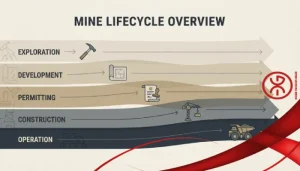what is a ball mill used for? A ball mill is a type of grinder used to grind and blend materials for use in various industries and applications. It works on the principle of impact and attrition: size reduction is done by impact as the balls drop from near the top of the shell. A ball mill consists of a hollow cylindrical shell rotating about its axis. The cylindrical shell is filled with grinding media (such as metal balls or ceramic balls) that, as the cylinder rotates, the balls are lifted up on the rising side of the shell and then they cascade down (or drop down on to the feed), from near the top of the shell. In doing so, the grinding media will be more useful for various industries

mportant points when working with a ball mill
what does a ball mill do? When working with a ball mill, there are several important points to consider:
- Safety Precautions: Ensure all safety protocols are followed, such as wearing appropriate personal protective equipment (PPE), including safety glasses, gloves, and a lab coat. Additionally, ensure the mill is properly grounded to prevent static electricity buildup.
- Mill Loading: Properly load the mill with the correct amount of grinding media (balls) and material. Overloading or underloading can affect the grinding efficiency and the final particle size.
- Operational Control: Monitor the operating parameters such as rotation speed, time, and duration of milling carefully. Adjust these parameters as needed to optimize the milling process and achieve the desired particle size and distribution.
- Cleaning and Maintenance: Regularly clean the mill and grinding media to prevent contamination and ensure efficient operation. Inspect the mill liners, bearings, and seals for wear and replace them when necessary to maintain optimal performance.
- Material Compatibility: Ensure that the material being ground is compatible with the grinding media and mill components. Consider the potential for abrasion, contamination, or chemical reactions between the material and the grinding media.
what is the use of ball mill? These points are crucial for safe and effective operation of a ball mill, whether in a laboratory setting or an industrial environment. Following these guidelines helps maximize the efficiency and longevity of the milling equipment while ensuring product quality and safety.

Conclusion
what is a ball mill used for? In conclusion, operating a ball mill effectively involves careful attention to several key factors. First and foremost, ensuring safety protocols are followed is paramount to protect personnel and maintain a secure working environment. Proper loading of the mill with suitable grinding media and material ensures optimal grinding efficiency and particle size distribution.
Monitoring and adjusting operational parameters such as rotation speed and milling duration are critical for achieving desired milling outcomes. Regular maintenance and cleaning of the mill components, including liners, bearings, and seals, are essential to prevent contamination and ensure smooth operation over time.
Lastly, understanding the compatibility of materials with the grinding media helps avoid potential issues like abrasion or chemical reactions, thus preserving product integrity. By adhering to these guidelines, operators can enhance the performance and longevity of their ball mills across various industrial and scientific applications.

FAQ
Ball mills can vary based on cylinder length, grinding medium (balls, rods, gravel), material unloading methods (tail discharge, middle discharge), drive mode (center drive, edge drive), process characteristics (wet, dry), and cylinder direction (vertical, horizontal).
The advantages include versatility, high capacity, long-term milling fineness retention, reliability, safety, and ease of maintenance.
The primary uses of a ball mill include:
- Grinding and size reduction of various materials, such as minerals, ores, chemicals, and ceramics, to achieve the desired particle size distribution.
- Blending and homogenizing different materials to produce uniform and consistent mixtures.
- Activation of materials by exposing them to high-energy impacts, which can lead to changes in their physical, chemical, or structural properties.
- Preparing samples for various analytical techniques, such as X-ray diffraction or spectroscopy, by reducing the particle size and improving sample homogeneity. Ball mills are versatile and widely used in many industries, from manufacturing to research and development, due to their ability to effectively grind and blend a wide range of materials.





